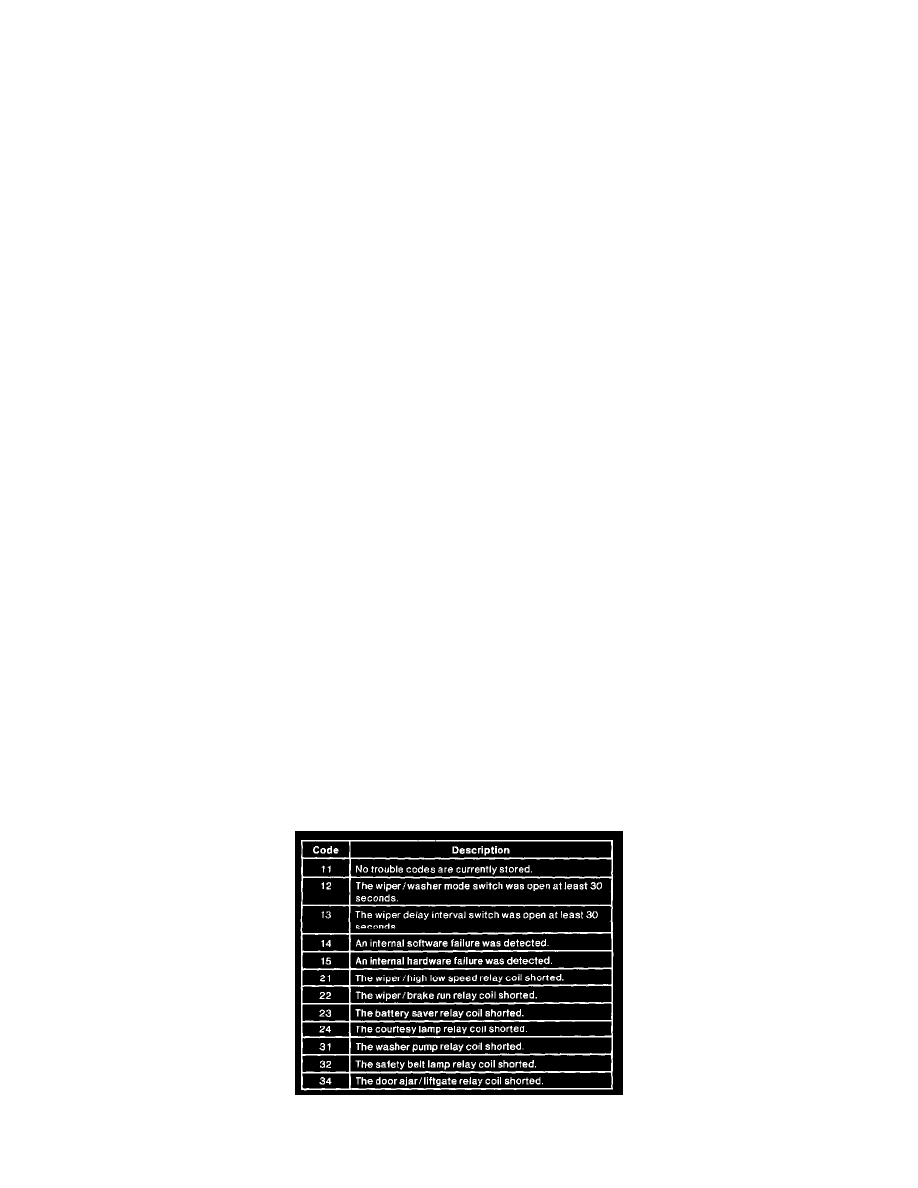Ranger 2WD V6-182 3.0L (1995)

General Module: Reading and Clearing Diagnostic Trouble Codes
Clearing Continuous DTCs
Manual Clearing of Continuous DTCs
Continuous DTCs must be cleared when the problem has been fixed. Trouble codes can be cleared by sending a request from the NGS to clear them.
Automatic Clearing of Continuous DTCs
Automatic clearing of individual trouble codes is done when the fault is not present for 80 start cycles. These trouble codes are automatically cleared
after 80 start cycles.
Detecting and Storing Diagnostic Trouble Codes
When the GEM energizes an external device, a short circuit condition can momentarily exist. This fault is not immediately stored as a diagnostic trouble
code since the fault can disappear after a few milliseconds. The GEM repeatedly attempts to energize the device for one second to confirm that the fault
still exists. If the device is successfully energized before one second elapses, a diagnostic trouble code is not stored and fault management action is not
taken. If the fault continues after the predetermined fault time, a diagnostic trouble code is stored and appropriate fault management action is then taken.
Detecting Faults In the GEM Output Circuits
Battery shorts can only be detected when the device being controlled is actuated. (e.g., relays, lamps or solenoids). All faults are monitored continuously
during the vehicle operation.
Reporting Diagnostic Trouble Codes
Faults are displayed after the continuous DTCs and the On-Demand DTCs are retrieved. Continuous DTCs should be retrieved from the GEM before an
On-Demand Self Test is run. These DTCs are then compared against the diagnostic trouble codes retrieved after running an On-Demand Self Test.
Requesting A Parameter Identification (PID)/Data Monitor
For the GEM to detect a battery short, the device must be activated. During Continuous State, a PID may fluctuate between both short and normal when
a battery short is present.
Running A Diagnostic Control Test
The tester controls the GEM by performing diagnostic tests. Diagnostic tests are done only when the GEM has disabled the function being controlled.
These control tests allow the tester to control the GEM's outputs and to synchronize the GEM's inputs.
Tester-Dependent Diagnostic Capability and Fault Isolation
The Tester-Dependent diagnostics allows you to communicate with the GEM through a tester connected to the DLC.
Running a diagnostic test may require the GEM to energize an output device. Some output devices might be limited to the amount of time that they can
be actuated. The tester can reactivate the device by exiting the diagnostic test and entering the test again. The GEM will not protect for enter/exit
condition of the tester.
During the Tester-Dependent Diagnostics mode, the tester can only command the GEM to perform tests on disabled functions. A response is sent to the
tester if a Diagnostic Test request is made on a function that is not disabled. The NGS can request the GEM to activate or deactivate an output device.
CTM On-Demand Diagnostic Trouble Code Chart
NOTE: The entire set of stored trouble codes will be repeated indefinitely until either the input test mode is entered or the ground is removed from the
diagnostic input. This table shows all of the possible trouble codes.
